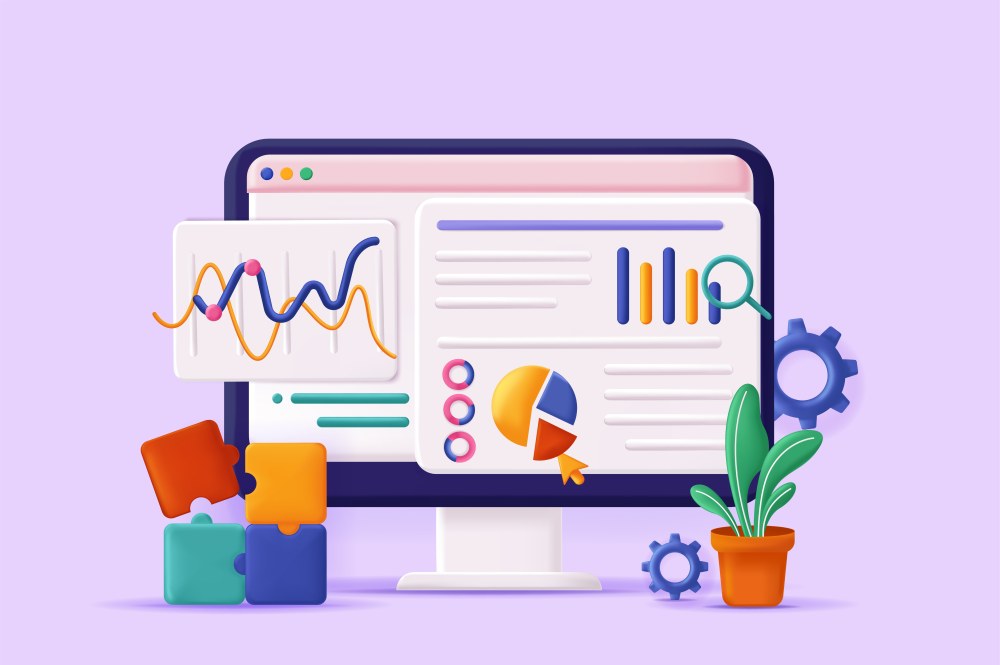If you’re serious about getting your website to rank high in the search engine results, then you need to be aware of the dos and don’ts of SEO. Search engine optimization is a complex and ever-changing field, with Google’s ever-changing search engine algorithms in the mix.
But, there are some basic principles that you should always keep in mind if you want your site to succeed. Here are the top 15 SEO do’s and don’ts that every webmaster should know.
1. Do keyword research
Before you start optimizing your site, it’s important to do some keyword research to find out which keywords are most relevant to your business. There are a number of free keyword research tools available online, such as Google AdWords Keyword Tool and Wordtracker.
Once you’ve identified a few potential keywords, you can then start incorporating them into your website’s content.
2. Do keep in mind user search intent
When optimizing your website and content for the search engine results pages, always keep in mind the user’s search intent. What is the user trying to accomplish by searching for this query?
Answering this question will help you determine which keywords to target, what type of content to create, and how to optimize that content for ranking.
3. Do create compelling and unique content
One of the most important things you can do to improve your website’s SEO is to create compelling, unique, and relevant content that will engage users and encourage them to stay on your site.
This means writing articles, blog posts, and other types of content that are interesting and informative, and that offer something new or different from what other sites are offering. Not only will this help to improve your search engine marketing, but it will also help to build up a loyal following of readers who are more likely to return to your site in the future.
4. Do use keywords throughout your site
Once you’ve identified a few relevant keywords, it’s important to use them throughout your site in order to improve your search engine rankings. This means incorporating them into your page titles, headings, and throughout the body of your content.
However, you should be careful not to overuse keywords, or else you run the risk of being penalized by search engines for keyword stuffing. Also, make sure you create various pages with a focus on the target keywords instead of stuffing all of them into one incomprehensive page. Moreover, you can conduct a backlink audit to optimize your website’s SEO and ensure that your site has valuable backlinks from reputable sources.
5. Do link to other websites
One way to improve your website’s SEO is to build links from other websites back to yours. This can be done by guest blogging on another site, participating in forums and discussion boards, and leaving comments on other people’s blog posts.
Just make sure that the links you’re building are high quality and relevant to your site’s content, or else they may do more harm than good.
6. Do optimize images with alt text
Images are an important part of any website, and they can also help improve your SEO. Search engines can’t read images, but they can read the alt text that you add to them.
Make sure to include keywords in your alt text, so that your images can be found in image searches.
7. Do track your results
The challenge for businesses is to track the right metrics in order to see the results they want. Here are some of the most important metrics to track when it comes to SEO:
Keyword rankings
This metric measures how well your website is ranking for specific keywords in search engines. It’s important to track both your overall keyword ranking and your ranking for individual keywords.
Traffic
This metric measures the number of visitors coming to your website from search engines. It’s important to track both the overall number of visitors and the number of visitors coming from specific keywords.
Leads
This metric measures the number of leads or sales generated from your website. It’s important to track both the overall number of leads and the number of leads generated from specific keywords.
Conversion rate
This metric measures the percentage of visitors who take the desired action on your website, such as filling out a form or making a purchase. It’s important to track both your overall conversion rate and your conversion rate for specific keywords.
Cost per lead
This metric measures the amount you spend on SEO divided by the number of leads generated from your website. It’s important to track both your overall cost per lead and your cost per lead for specific keywords.
By tracking these metrics, you can get a clear picture of your SEO progress and adjust your strategy accordingly. By tracking the right metrics, you can ensure that your SEO efforts are translating into tangible results.
Want to make sure your website is following the latest SEO best practices?
Contact Growth Hackers
8. Do optimize your website with the right SEO tools
SEO is a process that can be time-consuming, but it’s worth it to invest those precious hours into making your website as search engine friendly as possible. One crucial part of SEO is creating and submitting a sitemap to search engines.
This sitemap essentially acts as a table of contents for your website, telling search engines exactly what pages are on your site and how to find them.
Another important factor in on-page optimization is using descriptive URLs. Search engines place a lot of weight on the words used in URLs, so it’s important to choose wisely.
For example, if you have a page about digital marketing, rather than using a URL like “www.example.com/pagel”, use something like “www.example.com/digital-marketing-services”.
9. Do performance testing for device compatibility
Performance testing is a crucial component of any SEO strategy. By testing how well your site loads on different devices and in different browsers, you can ensure that visitors have a positive experience regardless of how they access your site.
In addition, performance testing can help you identify potential issues that could impact your search engine ranking. For example, if your site loads slowly on mobile devices, it could be penalized by Google’s ranking algorithm.
As a result, performance testing is an essential part of ensuring that your site is accessible and visible to the widest possible audience.
10. Do Invest in long-form content
One of the most important aspects of SEO is developing long-form creative content. This means creating content that is informative and engaging, while also being keyword-rich. It can be a challenge to strike the right balance, but it’s essential in order to rank well in search engines.
When done correctly, long-form creative content can help to build trust with your audience and establish you as an authority in your industry. It can also be a great way to drive traffic to your website and generate leads. So if you’re looking to boost your organic search rankings, be sure to invest in quality long-form creative content.
11. Don’t use black hat techniques
While there are a number of methods you can use to improve your website’s SEO, there are also a number of techniques that you should avoid at all costs. These so-called “black hat” methods include things like keyword stuffing, link buying, investing in hidden links, and other unethical practices that can get your site banned from search engines.
Not only is it important to avoid these techniques if you want to maintain a good relationship with Google search results, but using them can also put your entire site at risk. Google prefers it when you earn links through relevant content rather than through your link trading network.
12. Don’t overdo it with keywords
To perform SEO management successfully, do not stuff your content with keywords. You still need to keep the readers in mind. As we mentioned before, it’s important to use relevant keywords throughout your site in order to improve your search engine rankings. However, you should also be careful not to overuse keywords, or else you could be penalized for keyword stuffing.
A good rule of thumb is to use a maximum of two to three percent keywords on any given page, and to make sure that the keywords you do use are relevant to the content on that page.
13. Don’t forget about mobile users
With more and more people using mobile devices to access the internet, it’s important to make sure that your website is optimized for these users. This means having a mobile-friendly design and making sure that your site loads quickly on these devices.
You can also use Google’s Mobile-Friendly Test tool to see how well your site fares on mobile devices.
14. Don’t neglect your social media presence
In addition to your website, you should also make sure to maintain a strong social media presence. If you don’t have so much time to dedicate to your social media marketing, what I recommend is to repurpose content from your SEO-optimized blog posts to social media posts. This means having an active profile on sites like Facebook, Twitter, and LinkedIn, and regularly sharing relevant and engaging content.
Not only will this help you build up a loyal following, but it can also lead to more traffic being driven to your site. Of course, try not to go overboard by juggling multiple social media channels at once. Focus on the relevant social media channels, one at a time.
15. Don’t forget about local SEO
If you’re running a business that relies on local customers, then it’s important to make sure that your site is optimized for these users as well. This means claiming your listings on directories like Google Places and Yelp and making sure that your NAP (name, address, and phone number) is consistent across all of these listings.
You should also make sure to include local keywords in your site’s content and create pages specifically for these users.
16. Don’t forget about voice search
With the rise of virtual assistants like Siri and Alexa, it’s important to make sure that your site is optimized for voice search as well. This means using natural language throughout your content and including long-tail keywords that are commonly used in voice searches.
You can also use schema markup to help these virtual assistants understand your content better.
Get on top of the search engine results by making sure your site respect all the SEO do’s and don’ts!
17. Don’t neglect technical SEO
In addition to all of the above, it’s also important to make sure that your site is technically sound. This means having a well-coded site that loads quickly and is easy to navigate.
It also means making sure that your site is properly indexed by search engines, and that there are no broken links or other errors. You can use Google’s PageSpeed Insights tool to get a report on your site’s technical SEO health.
18. Don’t forget about user experience
Finally, it’s important to make sure that your site provides a good user experience. This means having well-written and informative content, easy-to-use navigation, and a design that is aesthetically pleasing.
It also means making sure that your site loads quickly and is accessible on all devices. You can use Google’s Mobile-Friendly Test tool to see how well your site fares in this area.
19. Don’t forget about backlinks
In addition to all of the above, it’s also important to make sure that your site has a good number of high-quality backlinks. This means getting links from other websites that are relevant to your niche, and that have a high degree of trust and authority.
But, how to find such opportunities? For instance, you can find these placements by carrying out a competitive audit and by performing a backlink analysis.
You can use Google’s Search Console to see how many backlinks your site currently has, or you can use Moz’s Open Site Explorer and other tools that help with building backlinks to see the quality of these links.
20. Don’t forget about tracking your progress
SEO takes time but that doesn’t mean you shouldn’t monitor your progress. Finally, it’s important to make sure that you’re regularly tracking your progress in terms of SEO. This means setting up Google Analytics on your site and using it to track your traffic levels and keyword rankings.
It also means keeping an eye on your competitors, and seeing how they’re faring in terms of search engine visibility. By regularly monitoring your progress, you can make sure that you’re on track to achieving your SEO goals.
Final Thoughts on the top SEO Do’s and Don’ts
By following the SEO do’s and don’ts listed above, you can help to ensure that your website is well-optimized for search engines and that it has a good chance of ranking highly on results pages.
However, keep in mind that SEO is an ever-changing field, so it’s important to stay up-to-date on the latest trends and techniques. Additionally, because there is no one perfect way to optimize a website, it’s important to experiment with different strategies and tactics in order to find what works best for your particular site.
Are you still stuck looking for ways to boost your SEO efforts? If so, Growth Hackers’ world-class SEO services can help. As a leading digital marketing agency, we have a team of experienced professionals who can help you with everything from keyword research to link building. We also offer a variety of tools and resources that can help you get the most out of your SEO campaigns.
One of the things that set us apart from other agencies is our focus on data-driven marketing. We believe that data should drive all of your marketing decisions, and we use our experience and expertise to help you make the most informed choices possible. We also offer detailed reports and analyses so that you can track your progress and see what’s working and what isn’t.
If you’re serious about boosting your SEO efforts, contact Growth Hackers today. We’ll be happy to discuss your needs and objectives and develop a custom plan that will help you achieve your goals.








